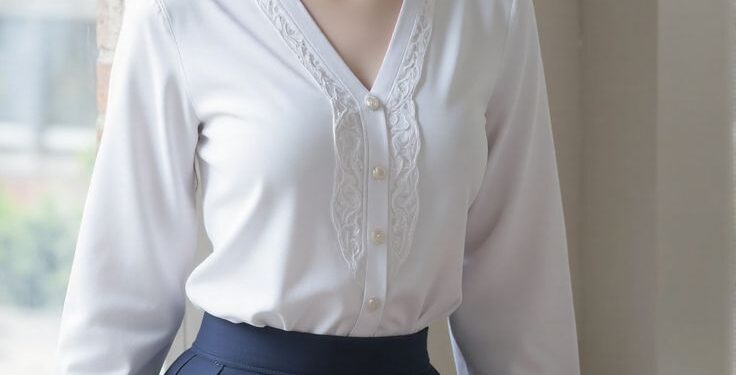Embark on a captivating journey into the world of beauty practices influenced by diverse cultures. From traditional ingredients to spiritual meanings, this topic unveils the rich tapestry of unique beauty routines that have been shaped by historical events and societal beliefs.
As we delve deeper, we will uncover the intriguing connections between cultural backgrounds and beauty standards, shedding light on the significance of these practices in different societies.
Cultural Backgrounds and Beauty Practices

Beauty routines are often deeply influenced by the cultural backgrounds of individuals, with each culture having its own unique beauty standards and practices. These beauty rituals are not only about enhancing physical appearance but also reflect traditions, beliefs, and values that have been passed down through generations.
Japanese Beauty Rituals
Japanese beauty practices focus on achieving clear and radiant skin. One traditional beauty ritual is the use of rice water as a facial cleanser, believed to brighten the skin and even out complexion. Another common practice is the application of geisha-inspired makeup, characterized by pale skin, red lips, and defined eyes.
Indian Beauty Traditions
In India, beauty rituals are deeply rooted in Ayurveda, an ancient healing system. Turmeric face masks are popular for their anti-inflammatory and brightening properties. Additionally, henna is often used to create intricate designs on the hands and feet during special occasions like weddings.
Victorian Beauty Standards
During the Victorian era, beauty standards in Western societies were influenced by the ideals of modesty and femininity. Pale skin was considered a sign of wealth and refinement, leading women to use lead-based cosmetics to achieve a porcelain complexion. Additionally, corsets were worn to create an hourglass figure, emphasizing a small waist.
Traditional Ingredients and Techniques
Traditional beauty routines often involve the use of natural ingredients that have been passed down through generations. These ingredients are known for their beneficial properties and are believed to enhance the skin and hair in unique ways.
Role of Traditional Ingredients
- Many cultures incorporate ingredients like turmeric, honey, coconut oil, and aloe vera into their beauty routines due to their moisturizing, anti-inflammatory, and antioxidant properties.
- These natural ingredients are preferred over synthetic products as they are gentle on the skin and have minimal to no side effects.
- Traditional herbs and plants are also utilized for their healing properties, helping to address specific skin concerns such as acne, hyperpigmentation, and dryness.
Unique Beauty Techniques
- Japanese beauty rituals often focus on gentle techniques like double cleansing, facial massages, and using rice water for brightening the skin.
- In India, Ayurveda plays a significant role in beauty practices, with techniques like face mapping and oil pulling being popular for achieving clear and radiant skin.
- Traditional African beauty practices include using shea butter and black soap for moisturizing and cleansing, as well as incorporating facial scarification for cultural significance.
Comparison with Modern Beauty Trends
- While traditional beauty practices emphasize natural ingredients and holistic approaches, modern beauty trends often incorporate advanced technologies and synthetic formulations.
- However, there has been a growing interest in merging traditional and modern techniques, leading to the rise of clean beauty products that combine the best of both worlds.
- Many beauty enthusiasts are now recognizing the benefits of traditional ingredients and techniques, incorporating them into their routines for a more balanced and personalized approach to skincare and beauty.
Spiritual and Symbolic Significance
Beauty rituals often carry deep spiritual and symbolic meanings that go beyond just physical appearance
. These practices are rooted in cultural beliefs and traditions that shape beauty standards in unique ways.
Connection to Nature
In many cultures, beauty rituals are deeply connected to nature and the elements. For example, indigenous tribes in the Amazon rainforest may use plants and herbs in their beauty practices, believing that these natural ingredients hold spiritual powers that enhance beauty and protect the skin.
Rites of Passage
Beauty rituals are also often linked to important life events and rites of passage. For instance, in some African tribes, scarification is a common beauty practice that marks significant milestones in a person's life, such as reaching adulthood or getting married.
These markings hold symbolic significance and are seen as a way to honor tradition and ancestry.
Sacred Symbols
Certain beauty rituals involve the use of sacred symbols or patterns that hold spiritual meanings. For example, in Indian culture, applying sindoor (a red powder) on the forehead is considered a sacred beauty practice that symbolizes the marital status of a woman and represents her devotion to her husband.
Social and Environmental Impact
Beauty practices are deeply intertwined with social interactions and cultural norms, shaping the way individuals present themselves and interact with others.
Social Interactions
Traditional beauty routines often serve as a form of social bonding, where generations come together to share knowledge and techniques. These practices not only strengthen familial and communal ties but also foster a sense of belonging and identity within a cultural group.
- Beauty rituals can also act as a way to communicate social status or marital eligibility, with specific hairstyles or makeup indicating age, relationship status, or tribal affiliation.
- Moreover, the exchange of beauty secrets and remedies can create a sense of solidarity among individuals, fostering a supportive community network.
Environmental Sustainability
Many traditional beauty practices incorporate natural ingredients sourced from the local environment, promoting sustainability and eco-conscious choices.
- By utilizing botanicals, minerals, and other organic materials, these routines prioritize environmental preservation and reduce the reliance on synthetic, chemical-laden products.
- Furthermore, the cultivation and harvesting of these natural ingredients often follow traditional methods that respect biodiversity and promote ecosystem balance.
Cultural Heritage Preservation
Beauty practices play a significant role in preserving cultural heritage by passing down knowledge, techniques, and rituals from one generation to the next.
- Through the continuation of these beauty traditions, communities can safeguard their cultural identity and celebrate their unique customs and beliefs.
- Beauty practices also serve as a tangible link to the past, allowing individuals to connect with their ancestors and honor their cultural roots.
Last Point

In conclusion, the cultural influences behind unique beauty routines reflect a fascinating blend of tradition, spirituality, and social impact. By exploring these dynamics, we gain a deeper understanding of how beauty rituals connect us to our heritage and the world around us.
Quick FAQs
How do cultural backgrounds impact beauty practices?
Cultural backgrounds influence beauty practices by shaping beauty standards and introducing unique rituals specific to each culture.
What role do traditional ingredients play in beauty routines?
Traditional ingredients often hold cultural significance and are believed to have specific benefits for the skin or hair, enriching beauty routines with natural elements.
Why is it important to explore the spiritual meanings behind beauty rituals?
Understanding the spiritual significance of beauty rituals provides insight into the deeper cultural beliefs and values that shape beauty standards and practices.
How do cultural beauty practices impact social interactions?
Cultural beauty practices can serve as a form of social bonding and expression, influencing interactions and fostering connections within communities.
Can beauty practices promote cultural heritage preservation?
Yes, beauty practices rooted in cultural traditions help preserve heritage by passing down rituals and techniques from generation to generation.
 Beauty routines are often deeply influenced by the cultural backgrounds of individuals, with each culture having its own unique beauty standards and practices. These beauty rituals are not only about enhancing physical appearance but also reflect traditions, beliefs, and values that have been passed down through generations.
Beauty routines are often deeply influenced by the cultural backgrounds of individuals, with each culture having its own unique beauty standards and practices. These beauty rituals are not only about enhancing physical appearance but also reflect traditions, beliefs, and values that have been passed down through generations.
 In conclusion, the cultural influences behind unique beauty routines reflect a fascinating blend of tradition, spirituality, and social impact. By exploring these dynamics, we gain a deeper understanding of how beauty rituals connect us to our heritage and the world around us.
In conclusion, the cultural influences behind unique beauty routines reflect a fascinating blend of tradition, spirituality, and social impact. By exploring these dynamics, we gain a deeper understanding of how beauty rituals connect us to our heritage and the world around us.







